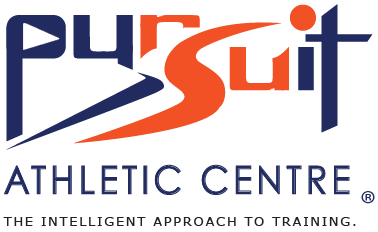Why Golfers Get Injured And What You Can Do About It
How physio, massage, and chiropractic care can keep you swinging strong
Golf isn’t a contact sport, but make no mistake: it’s demanding. The golf swing is a complex, full-body movement that requires strength, control, and a surprising amount of mobility. When one area is tight, weak, or not moving properly, other areas pick up the slack leading to some of the most common (and frustrating) golf injuries.
Here’s a breakdown of injuries we see often in golfers at Pursuit Athletic Centre, and how therapy can help you recover and prevent setbacks.
1. Low Back Pain
The golf swing puts repeated rotational stress on the lumbar spine, especially if hip or thoracic mobility is limited. Over time, this can lead to muscle strain, disc irritation, or joint dysfunction. Back pain is one of the most common reasons golfers miss time on the course. Our physiotherapy team can help identify the underlying cause and build a rehab plan that focuses on both mobility and core control.
2. Golfer’s Elbow (Medial Epicondylitis)
Despite its name, this condition isn’t exclusive to golfers, but it’s common due to the repetitive gripping and wrist flexion involved in swinging. It presents as pain on the inside of the elbow and can worsen without rest and treatment. Manual therapy and progressive loading, combined with massage therapy, are often key to recovery.
3. Rotator Cuff Strain or Tendinopathy
Your shoulders play a major role in your backswing and follow-through. Rotator cuff injuries typically develop over time, showing up as dull aches, reduced range of motion, or sharp pain during movement. Our chiropractors and physios work together to restore joint integrity, improve scapular mechanics, and reduce inflammation.
4. Hip Tightness or Impingement
Limited hip mobility can rob you of power in your swing—and cause compensations elsewhere, like in your lower back or knees. Hip impingement or muscular tightness often shows up as stiffness, pinching, or a “block” in your swing. Restoring hip rotation and strength through guided therapy and mobility work can significantly improve swing mechanics and prevent injury.
So, What Can You Do About It?
The key to staying injury-free isn’t just rest; it’s addressing the root cause. At Pursuit, we take a holistic, athlete-first approach that combines hands-on therapy, individualized rehab, and movement education to help golfers feel and play their best.
Whether you’re rehabbing an injury or want to move better on the course, our integrated team is here to support your performance from the ground up.
Want to stay pain-free this season? Reach out to our team to learn how therapy can keep you swinging stronger, longer.
